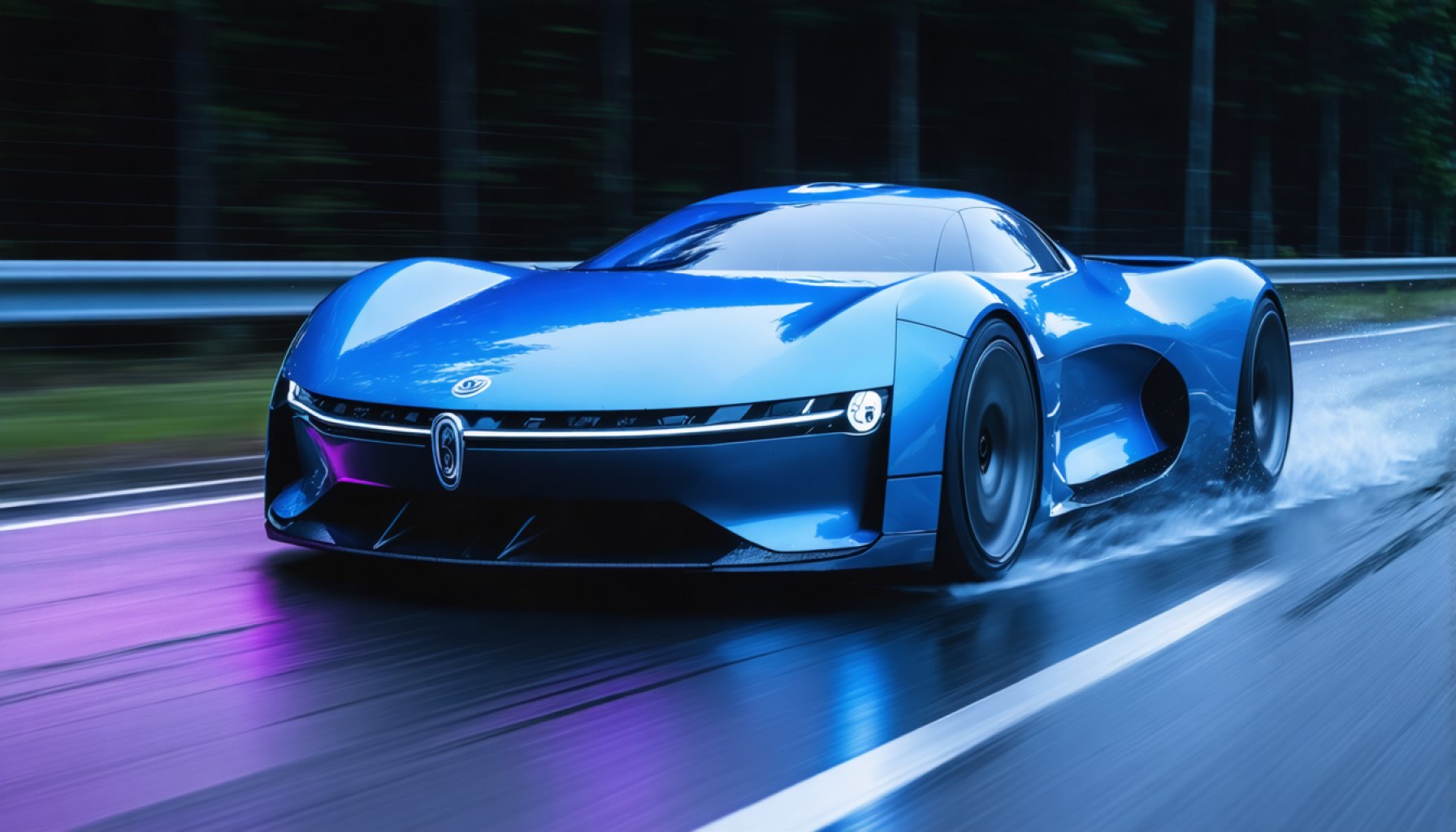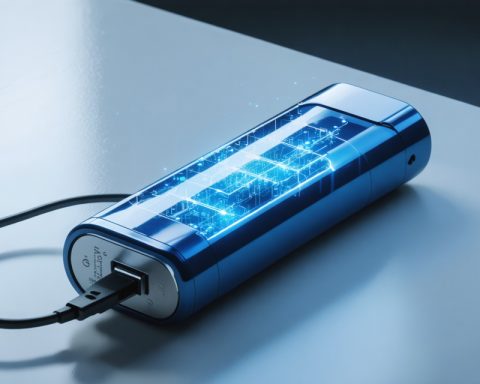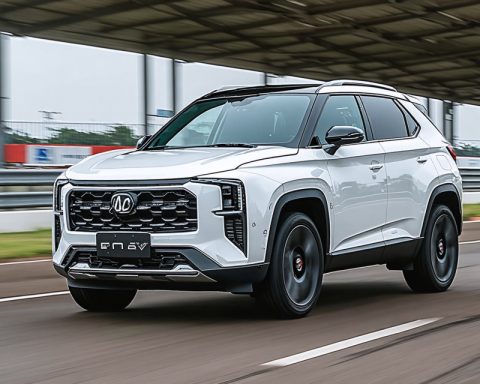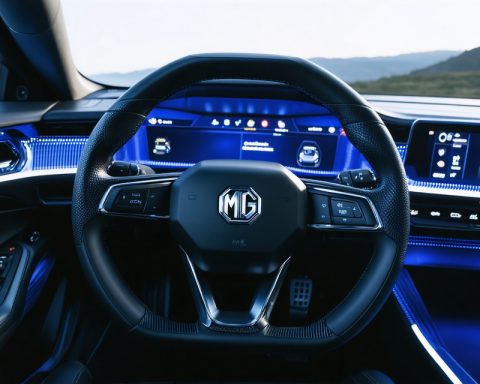- The electric vehicle (EV) revolution is transforming global transportation and energy dynamics, offering futuristic, sustainable driving options.
- Battery Electric Vehicles (BEVs) run entirely on electricity, providing freedom from gasoline and varied driving ranges up to 300 miles.
- Hybrid Electric Vehicles (HEVs) combine gasoline engines with electric motors, offering flexibility and alleviating range anxiety for potential EV buyers.
- Plug-in hybrids enhance traditional hybrids by enabling daily electric commutes while maintaining a gasoline engine for longer trips.
- Emerging technologies like solar-driven engines and hydrogen fuel cells are poised to further innovate clean transportation solutions.
- EVs represent a societal shift toward sustainability and energy efficiency, encouraging reflection on our role in a more electrified future.
- The evolution of EVs marks an ongoing journey into redefining the future of driving, focusing on both destination and the means of travel.
Imagine cruising down the highway in a sleek, silent machine, one that hums with a futurist promise. This is not a scene from a sci-fi movie, but the reality of the electric vehicle (EV) revolution that’s sweeping across the globe. From bustling city streets to scenic country roads, these vehicles are transforming the way we think about transportation and energy.
At the forefront of this revolution are the two giants: Battery Electric Vehicles (BEVs) and Hybrid Electric Vehicles (HEVs). The choice between them sparks discussions among vehicle enthusiasts and environmentalists alike. BEVs are powered entirely by electricity, eliminating the need for gasoline. They glide smoothly over asphalt, relying on their charged batteries like a cellphone demands its charger. With ranges varying from 100 to over 300 miles, BEVs offer varying degrees of freedom from the plug, capable of short urban commutes or long cross-state drives before seeking out a charging station.
However, some potential buyers eye these distances with skepticism. That’s where the ingenious hybrid vehicles enter the scene. Blending the best of both worlds, HEVs utilize both a conventional gas engine and an electric motor. They elegantly switch between these power sources, often using the gas engine to rejuvenate the on-board electric battery. This seamless dance allows hybrid cars to cruise at lower speeds powered by electricity, then rev up with gasoline for higher-speed travel. This flexibility makes them a compelling choice for those wary of fully electric independence.
The market also introduces the advent of the plug-in hybrid, a significant upgrade to traditional hybrids. These vehicles empower their drivers to cover daily commutes using electricity alone, while keeping a gas engine on standby for those long weekend getaways to a remote beach house or a countryside retreat.
And as engineers and inventors push the boundaries of innovation further, keep an eye on exciting possibilities like solar-driven engines and hydrogen fuel cells. These technologies could redefine the horizons of clean energy in transportation.
The conversation around EVs is more than a technical breakdown of engines and powertrains. It’s a reflection of societal shifts towards sustainability, energy efficiency, and an increasingly electrified world. As these vehicles continue to evolve, they encourage drivers to consider: What role do we want to play in this dynamic landscape of the future?
With each mile covered and every battery recharged, a new chapter in automotive history is being written. The journey into the future of driving is not just about where we can go, but how we choose to get there.
The Great Electric Vehicle Debate: BEVs vs. HEVs – What You Need to Know
Understanding the Electric Vehicle Revolution
The electric vehicle (EV) revolution is redefining transportation, with Battery Electric Vehicles (BEVs) and Hybrid Electric Vehicles (HEVs) at the forefront. As these technologies advance, understanding their differences and implications becomes crucial for consumers and enthusiasts alike.
Features, Specs & Pricing
Battery Electric Vehicles (BEVs)
– Power Source: Entirely powered by electricity.
– Range: Typically between 100 to 300+ miles on a single charge.
– Charging: Requires access to charging infrastructure.
– Pricing: Generally higher initial costs but potentially lower lifetime maintenance costs due to fewer moving parts.
– Environmental Impact: Zero tailpipe emissions; better for urban air quality.
Hybrid Electric Vehicles (HEVs)
– Power Source: Combination of an internal combustion engine and an electric motor.
– Range: Greater flexibility due to the presence of a gasoline engine; no range anxiety.
– Charging: Does not require external charging; the battery is charged through regenerative braking and the gasoline engine.
– Pricing: Usually less expensive than BEVs; prices can vary significantly by brand and model.
– Environmental Impact: Lower emissions than traditional gasoline vehicles but not as low as BEVs.
How-To: Decide Which Vehicle is Right for You
1. Assess Your Driving Habits: If your daily commute is within the typical BEV range, a BEV may be suitable. For longer distances and those without consistent access to charging, an HEV could be more practical.
2. Consider Your Environmental Goals: For those focused on environmental conservation, BEVs offer the cleanest option.
3. Think About Budget and Cost: Consider both the initial cost and potential savings on fuel and maintenance.
4. Evaluate Charging Infrastructure: Ensure you have convenient access to charging stations if opting for a BEV.
Market Forecasts & Industry Trends
– Increasing Popularity: The global EV market is expected to grow significantly, driven by government incentives and rising environmental awareness. According to a report by the International Energy Agency, EV sales are projected to reach nearly 60 million annually by 2030.
– Technological Advances: Innovations in battery technology could soon improve range and reduce charging times, making BEVs even more appealing.
– Policy and Regulation: Many countries are setting ambitious targets for phasing out internal combustion engines, further bolstering the transition to EVs.
Real-World Use Cases
– Urban Commuting: BEVs excel in city environments where short distances and frequent stopping are common.
– Long-Distance Travel: HEVs and plug-in hybrids provide flexibility for those needing a vehicle capable of both urban and extensive travel.
Security and Sustainability
– Data Security: Modern EVs are equipped with advanced software that may pose security vulnerabilities. Regular updates and cybersecurity measures are critical.
– Sustainability Concerns: While BEVs are more environmentally friendly, the production of batteries raises concerns over resource extraction and recycling.
Pros & Cons Overview
BEVs
– Pros: Zero emissions, lower operating costs, smooth and quiet rides.
– Cons: Limited range, charging time, and higher upfront cost.
HEVs
– Pros: Versatility, no range anxiety, often lower upfront cost.
– Cons: Some emissions, more complex maintenance than BEVs.
Conclusion: Actionable Recommendations
– Try Before You Buy: Test drive both vehicle types to experience their differences firsthand.
– Research Incentives: Check for available government tax credits or incentives that can reduce your effective purchase cost.
– Plan for Charging: If considering a BEV, map out local charging stations and think about installing a home charger.
Explore Further
For more insights into the EV market and sustainability, visit the official sites of Tesla, Toyota, and the International Energy Agency for the latest research and developments.






















